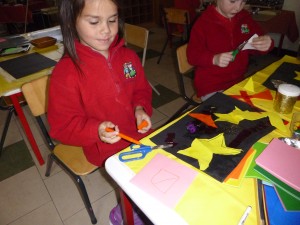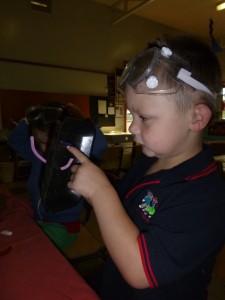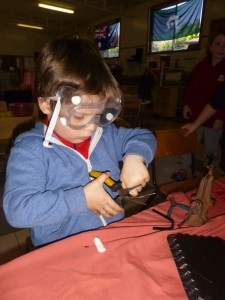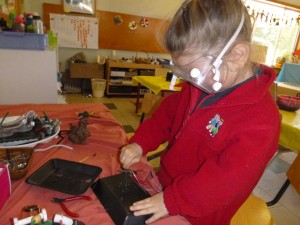Elise was at the collage table with Maggie and Eli – they were making space pictures. Maggie wanted to make a rocket – she could see that she needed a triangle but wasn’t sure how to draw one. She asked for help from a teacher, and we gave her a paper triangle to copy – but then Elise said that she knows how to do a triangle. She showed her.
She drew a square and then a line across the middle, diagonally. Then she said “It’s like a sandwich”. So Maggie had a go and now she knows how to make triangles too – just like making a sandwich!
What a wonderful moment of sharing and learning! We have been working on making their learning more obvious to the children and on encouraging them to use each other as their first port of call – to ask for help from a friend or to ask an “expert” how to do something. To have someone offer their help is even better – it means that Elise can take the initiative and is confident about sharing her knowledge with others, and that Maggie is quite comfortable with asking for help, and learning from others.
This links so well with the many conversations we have had about the shapes of our sandwiches at lunch time – but nobody before has transferred that everyday maths knowledge to a new context. Thanks Elise – you have taught us all something new!



